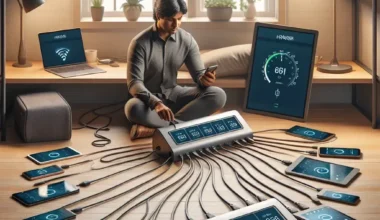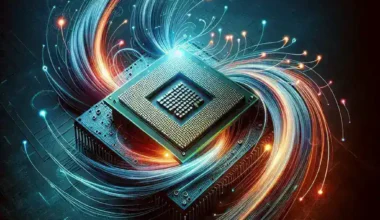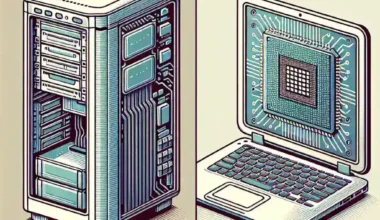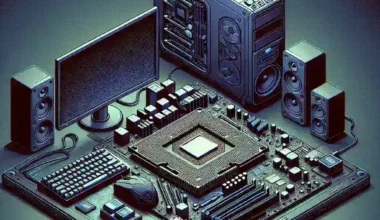In the realm of display technology, Cathode Ray Tubes (CRTs) and Liquid Crystal Displays (LCDs) represent two different generations of devices, each with unique characteristics and applications. While CRTs dominated the market for several decades, LCDs have largely replaced them due to various advantages. This article delves into the differences between CRT and LCD technologies, their benefits, drawbacks, and best-use scenarios.
Table of Comparison
| Feature | CRT | LCD |
|---|---|---|
| Technology | Cathode Ray Tube | Liquid Crystal Display |
| Size & Weight | Large & Heavy | Slim & Light |
| Power Consumption | High | Low |
| Image Quality | Excellent color reproduction and contrast | Excellent sharpness and brightness |
| Response Time | Fast | Varies; generally slower than CRT |
| Viewing Angles | Wide | Narrower (improving with technology) |
| Burn-in | Possible | Not possible |
| Lifespan | Long | Moderate to long |
| Price | Generally cheaper (now obsolete) | More expensive (dropping) |
Technology
CRTs use electron beams directed at phosphorescent screens to create an image. This technology is known for its deeper blacks and better contrast ratios, thanks to its ability to control the intensity of electron beams with great precision. On the other hand, LCDs utilize a liquid crystal solution sandwiched between two polarizing filters and a backlight. The liquid crystals modulate light to produce an image, which offers advantages in brightness and sharpness.
Size and Weight
One of the most noticeable differences between CRTs and LCDs is their size and weight. CRTs are bulky and heavy due to the large glass tube and other components required for their operation. In contrast, LCDs are significantly lighter and slimmer, making them more suitable for modern workspaces and wall mounting.
Power Consumption
When it comes to power consumption, LCDs have a clear edge over CRTs. CRTs require more electricity to power the electron guns and magnetic coils needed to display an image. LCDs, utilizing a backlight and liquid crystals, are much more energy-efficient, which translates to lower electricity bills and a lower carbon footprint.
Image Quality
Each technology offers distinct advantages in terms of image quality. CRTs are known for their excellent color reproduction and high contrast ratios. They are capable of displaying deep blacks and a wide range of colors. However, LCDs have made substantial advancements in recent years. Modern LCDs offer superb sharpness, high brightness levels, and decent color reproduction. While they initially struggled with contrast and color accuracy, these issues have been largely resolved in recent high-end models.
Response Time
Response time is another area where CRTs have traditionally had an advantage. The electron beam technology allows for fast response times, making CRTs ideal for fast-paced gaming and other applications where motion blur can be an issue. LCDs have made significant strides, but many models, especially older ones, can still suffer from slower response times and motion blur. However, modern gaming LCDs equipped with high refresh rates and low response times are closing the gap.
Viewing Angles
Viewing angles refer to the image quality consistency observed from different angles. CRTs offer excellent viewing angles, maintaining color and contrast integrity even when viewed from the side. Early LCDs struggled in this domain, leading to color shifts and contrast degradation when viewed off-center. Nevertheless, newer LCDs, particularly IPS (In-Plane Switching) panels, have significantly improved viewing angles, although they may still fall short compared to CRTs.
Burn-in
Burn-in occurs when a static image displayed for a prolonged period becomes permanently etched on the screen. CRTs are susceptible to burn-in, which is a significant drawback for static image applications like security monitoring. In contrast, LCDs are immune to burn-in, making them more suitable for such applications.
Lifespan
The lifespan of a display can influence the total cost of ownership. CRTs generally have a long lifespan, often outlasting early models of LCDs. However, continuous advancements in LCD technology have resulted in products with much-improved lifespans, making them a more reliable long-term investment today.
Price
Initially, LCDs were significantly more costly than CRTs. However, as production techniques have improved and economies of scale have come into play, the prices of LCDs have dropped dramatically. Today, while CRTs are essentially obsolete and no longer produced, LCDs are not only more affordable but also offer better value for money considering the advantages they bring.
Conclusion
In summary, CRTs and LCDs each have their own set of advantages and disadvantages. CRTs offer superior contrast ratios, color accuracy, and response times, making them ideal for tasks that require high image fidelity and fast motion rendering. However, their bulk, higher power consumption, and susceptibility to burn-in are significant drawbacks. On the other hand, LCDs excel in terms of size, weight, power efficiency, and immunity to burn-in. Continued advancements in LCD technology have addressed many of their initial shortcomings related to image quality and viewing angles, making them the prevalent choice for most applications today.
The choice between CRTs and LCDs largely depends on the specific requirements of the user. For general use, multimedia, and gaming, modern LCDs are clear winners. However, for tasks requiring superior contrast and color accuracy, some enthusiasts and professionals might still prefer high-quality CRT monitors if they can find them.
Ultimately, the convergence of technology trends and user needs has tilted the balance in favor of LCDs, driving CRTs into the annals of technological history. Nonetheless, understanding the differences between these technologies provides valuable insights into the evolution of display technology and the factors that drive innovation in this space.






